Our top picks
BEST OVERALL – PureMate 47-Inch Tower Fan
First off, this tower fan lives up to its name, standing at 47 inches. This means that it's roughly the same height as a typical pedestal fan and can keep your entire body cool. And in case that wasn't enough coverage, it also has a 70-degree oscillation mode that you can turn on with a click of a button!
It also comes with a whopping 12 wind speeds (easily making it one of the best fans in terms of speed options), 4 wind modes, a timer and even an optional ioniser. But the feature that easily makes it the best tower fan is how little energy it uses – at only 28W. So, you're even saving money in the long run!
And if you somehow still weren't sold, just like all the best fans, it's remarkably quiet. It has a usual output of 43 – 56 dBA, which is roughly the level of a subdued conversation. Sure, there are even quieter fans but this tower fan simply has too many good things to ignore!
- Type: Tower fan
- Power: 28W
- Speeds: 12 fan speeds
- Remote control: Yes
Advantages
Disadvantages
BEST VALUE – Beldray 6L Air Cooler
While not as cheap as desk fans, getting an air cooler at this price is quite a lucky find! Especially considering that it holds up quite well compared to its 300-pound colleagues. It comes with all of the features you'd expect – like 3 wind speed settings and an oscillating function. On top of that, you also get a 6 l water tank, which is on the bigger side considering the size and price of this model.
But the Beldray has even more surprises! For one, clocking in at 8.8 m/s wind speed, it delivers a surprisingly strong air flow. And since it's only 70 cm high, it's easy to move around and treat it like your own personal cooling system.
- Type: Air cooler
- Power: 65W
- Speeds: 3 fan speeds
- Remote control: No
Advantages
Disadvantages
BEST PREMIUM: Dyson Purifier Hot+Cool™ Formaldehyde
The Dyson Hot+Cool feels like an odd model for this list, as it's so much more than just a fan. Don't get us wrong, as a fan, it's one of the best. However, it does so much more than just that! For example, it can be used as a heating source and can also purify the air from any nasty chemicals flying around.
And this is quite significant, as nothing can escape the range of this purifier/cooler. With a 350-degree oscillating function, it has you covered on all sides. Plus, while it does come with a remote control, you can use this model with just your voice.
We could keep rattling off all of the features this bladeless floor fan has to offer but we think you get the picture. If you just want to have the highest-quality cooler (that can also do a lot of other stuff), Dyson has you covered!
- Type: Purifying fan heater
- Power: 240W
- Speeds: 10 fan speeds
- Remote control: Yes
Advantages
Disadvantages
BEST TOWER FAN – Dreo Pilot Max Smart Voice Control Tower Fan
The thing that makes Dreo fans the best fans for some is that they have a really good output while still remaining relatively silent. And that is very apparent with this model, as it clocks in at 7.9 m/s air speeds while also outputting around 25 dBA! For comparison's sake, that's quieter than most libraries.
This tower fan also has really good coverage, as it's fairly tall (at just over 1m), can oscillate up to 120 degrees, and has a whopping 12 air speed settings to choose from. So, you can keep the entire room precisely as cool as you'd like it to be.
As the name might have given away, the tower fan can also be controlled via voice commands or through their app. So, no getting up to crank up the speed every time you start feeling hot under the collar. And, all things considered, the price is more than fair!
- Type: Tower fan
- Power: 46W
- Speeds: 12 fan speeds
- Remote control: Yes
Advantages
Disadvantages
BEST DESK FAN: Honeywell Sleep Fan With Pink Noise
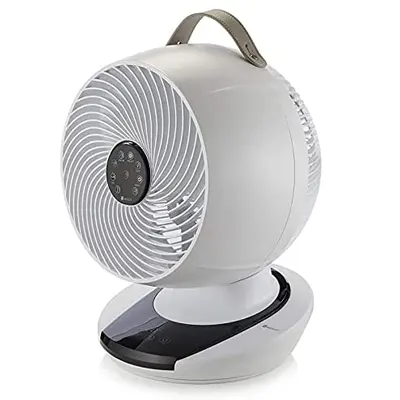
First off, let's talk about why it's called a sleep fan. While you might think that this just means it's quiet, it's actually more complex than that. Unlike most traditional desk fans, this sleep fan can play pink noise throughout the night, helping you fall asleep more easily than ever before!
On top of that, it can even be used as a USB charger, which is rather rare. And as a fan, it does everything you need it to. It has 3 speed settings, a timer, and an oscillating mode. However, unlike tower fans or even most desk fans, you can even tilt it any way you'd like.
On top of all that, we simply think this fan is a lot more elegant than most desk fans you're likely going to find. The design is simple while also looking rather futuristic! Our only gripe with the model would be that we couldn't find the exact fan speed for this model.
- Type: Desk fan
- Power: N/A
- Speeds: 3 fan speeds
- Remote control: No
Advantages
Disadvantages
BEST PEDESTAL FAN: Schallen Floor Standing Fan
The Schallen fan is a very simple but effective pedestal fan that is sure to keep you cool over the summer. It has 5 speed settings and caps off at about 80m3/min, which is more than decent. It can also tilt down and move side-to-side when you want to cool down a larger area.
But the most significant part of this fan is how quiet it is! At only 35 dBA, you can sleep all night with the fan on and never even notice it! This is especially rare for regular floor fans, as typically only bladeless fans can operate at such a low volume.
Another feature that makes it stand apart from the rest is the addition of a nifty little remote control you can use to alter the speed settings at any time. The fan even has a convenient socket where you can place the remote so that you don't lose it.
- Type: Pedestal fan
- Power: N/A
- Speeds: 5 fan speeds
- Remote control: Yes
Advantages
Disadvantages
BEST BUDGET: Honeywell HT900EV1 Turbo Fan
This turbo-fan from Honeywell is pretty much guaranteed to steal the show if in the room with some other fans. It is very affordable, incredibly lightweight and portable and it can handle up to 185 cubic feet per hour. The fan oscillates left to right and tilts up and down, covering a good part of any room it's placed in.
You can use it as a desk fan or combine it with a wall mount in order to fix it in place. Honeywell even states that the fan can be felt 7 metres away and if the reviews are anything to go on, that seems to be the case! In other words, although it's quite cheap, this budget fan is packing quite the punch.
With all of that being said, we do also have to acknowledge that a few corners had to be cut in order to keep the price so low. For example, the fan is a bit loud at higher speed settings, there doesn't seem to be a remote, and there are no options in terms of modes or even a timer. Nevertheless, if you just want a simple fan that's rather powerful and cheap, this model is ideal.
- Type: Desk fan
- Power: 40W
- Speeds: 3 fan speeds
- Remote control: No
Advantages
Disadvantages
BEST BLADELESS: ULTTY Bladeless Tower Fan and Air Purifier
While this bladeless fan from ULTTY doesn't have too many bells and whistles, it gets the job done and offers very admirable features all around. For one, the design is rather lovely and unique, as the machine could easily pass for a modern Bluetooth speaker.
Plus, the fan comes with nine different speed settings, three modes, 80-degree oscillation and even a 30-degree tilt feature! So, regardless of where you are in the room, it's bound to bring a cooling breeze your way. On top of that, it's a rather powerful air purifier – trapping 99.99% of all airborne particles you likely don't want to be breathing in.
Not to mention that swapping out the filters is as easy as it gets, as you just pop the top off and slide a new filter inside. So, while it doesn't have as many premium features as some of the other fans we've featured, we still think it's more than worth the price!
- Type: Bladeless tower fan
- Power: 35W
- Speeds: 9 fan speeds
- Remote control: Yes
Advantages
Disadvantages
BEST SMART: Princess Smart Air Cooler
Unlike an air conditioner, this air cooler basically works like a fan. However, it also comes with a water tank and cooling filters, making it so that the air being blown in your direction is a cooling breeze that can take the edge off of summer. And all you need is some water and ice!
As a fan, the Princess Smart Air Cooler is also fairly decent. It comes with three speed settings, a remote control, and the ability to be paired with an app. In fact, if you have an Amazon Alexa or some other virtual assistant, you can even control the fan with voice commands. Realistically, it doesn't get any more futuristic than that!
You also get to choose between three modes, depending on whether you want the fan on the entire time or just occasionally. And it has a 60-degree oscillating feature and a 12-hour timer. Overall, just a very decent air cooler that also boasts some really futuristic features!
- Type: Air cooler
- Power: 60W
- Speeds: 3 fan speeds
- Remote control: Yes
Advantages
Disadvantages
BEST PORTABLE: ITHKY HandsFree Personal Fan
Having the best fan is great as you can cool off while you're at home watching TV or playing video games. But what about when you have to leave your house? Even the best fans typically need to be plugged in and are too bulky to just carry around. However, this fan is far from typical.
This fan goes around your neck and it can keep you cool anywhere from 2 to 6 hours on end. It’s powered by a rechargeable 1800 mAh battery and it runs very quietly, allowing you to hear your surroundings loud and clear even while you wear it around your neck. It’s mini-USB powered, so don’t try and use USB-C on it. Even at this small of a form factor, this fan has 3 speeds and if you don’t push it too hard – it should last you a long time.
And while it can't compete in terms of power with all the fans we've featured so far, we'd still give it a passing grade. Plus, since it's so close to your skin, you don't need an especially strong breeze anyway! So, if you want to cool off regardless of where you go, we'd say it's more than worth taking a look.
- Type: Portable fan
- Power: 1800mAh batteries
- Speeds: 3 fan speeds
- Remote control: No
Advantages
Disadvantages
What to consider when buying the best cooling fan
It would be very easy just to walk into the store, point a finger at a fan and buy it. We’re not saying you couldn’t, but we are saying you shouldn’t. Before you buy a cooling fan, make sure you understand which features make up for a great cooling fan.
If you understand what makes a great fan, it’ll be much easier to get one. Here are the features you should pay special attention to. Furthermore, these are the exact same features we’ve used to compare the fans and determine which one’s the best.
Type Of Fan
As you can probably guess, the main thing to pay attention to when shopping for a cooling fan is the type. Not every fan is the same and depending on your needs and depending on the room you plan on using the fan in – you'll need a different kind of a fan.
As we've said, there are multiple types of fans. Some of them are standing, desk, tower, cyclonic, ceiling, misting, wall-mounted, bladeless, window fans and so many more. As you can see, some of them are portable – some aren't. Some spin – some don't.
All of them will do their jobs of cooling you, but it’s up to you to find the one that’s going to do it the best. So, let's just go over some of the main categories you're bound to run into and explain how they differ from one another. However, as you'll soon see, there's a lot of overlap between these fan types.
Tower fans
Tower fans are an excellent choice if you don't have a lot of space. Since they mostly take up vertical space, a tower fan can easily fit into even the tiniest of rooms. Plus, tower fans can typically cover a rather large area, due to their height. And, as their name implies, tower fans usually take the shape of a tower – being relatively thin throughout.
Pedestal fans
Pedestal fans are very similar to tower fans but take up a bit more space at the bottom. They're also one of the most popular fan designs and the go-to option for many. The top of the fan can typically be tilted in all directions and/or oscillate from side to side. And pedestal fans can typically vary in price quite heavily, as you can find models from a decade ago that cost 10 pounds as well as newer models that can be over 100 pounds.
Floor fans
Floor fans come in a few different forms. They typically refer to fans that stay low to the ground and often incorporate things such as air coolers or air purifiers. Floor fans are also typically a box or rectangle shape but they can resemble the top half of a pedestal fan as well.
However, the term can also be used to describe any fan that's not a desk fan or a ceiling fan. So, if you see a tower fan being under the floor fan category, don't be surprised.
Desk fans
Desk fans are the smallest of the bunch and can typically sit atop your desk. They're not nearly as powerful as the other fans but they're a lot more convenient. For people who don't want to cool down an entire room but rather just be comfortable while working on the computer, desk fans make for an amazing choice.
They can also sometimes be mounted to the wall. However, it's important to take the power of the fan into account. After all, a lot of them were built to only offer cooling when right next to you.
Bladeless fans
As the name suggests, bladeless fans are fans that don't use traditional spinning blades in order to blow air. They typically have a prolonged spherical top to direct the air current, thus making them a lot safer than traditional fans. Therefore, bladeless fans are ideal for people with small children or bets, as you can't easily hurt yourself while messing around with the fans.
On top of this, bladeless fans typically have very good coverage. For example, if you take a look at our pick for the best bladeless fan UK, you'll see that it can purify air regardless of which direction it's coming from as the filter covers all 360 degrees. So, if getting a good air purifier is also important for you, bladeless fans are typically a very solid option.
Air coolers
While they can be considered a separate category, air coolers often come up when looking for the best fans. That's because, in essence, air coolers are just fans with extra cooling. This cooling effect is achieved by vaporising air and then having it pass through a cold filter before the fan in the back blows it into the room.
Despite the name, it's not always a given that an air cooler can actually lower the temperature of the room. After air, there's a reason why air conditioning units are so bulky and expensive. However, by deliver a noticeably cooler breeze, air coolers can help you feel more comfortable during the heat.
Power
There are two things when it comes to fans and power that you need to know and those are –power consumption and cooling power.
The latter is obviously the more important one, as most fans won’t spend that much power. Cooling power, on the other hand, will greatly differ from one fan to another. A lot of factors will impact the fan’s cooling power. Fan speed, blade size, blade thickness… All of those will contribute to how effective the fan will be when it comes to cooling you.
Now, power consumption shouldn’t be an issue, but it’s worth noting that tower fans will certainly draw more power than a classic, standing cooling fan. And if you get an air cooler or portable air conditioner, the gap is even larger.
Air speed
To add to the fan cooling power bit, we'd like to make one thing very clear. Most fans will have a number associated with the wind power that should showcase how quickly the air can cover a certain area. However, note that not all manufacturers use the same measurements!
For example, some will put it down as 8 metres squared per second. This is rather decent. However, a competitor might put down 800 metres squared per hour. And while the number is higher, note that it's not the same measurement. In fact, the second model in this example only has a cooling power of 0.2 metres per second – making it a lot weaker than the first one!
Noise level
Since a lot of people like to sleep with a fan on all night, getting a quiet fan is rather important. Luckily, almost all manufacturers display an approximation of how loud their fans tend to get. Just for reference, 50 dBA is comparable to a quiet conversation, and 30 dBA is typically quieter than most libraries.
However, do note that some manufacturers only talk about the quietest their fans can get. So, for example, a fan might only emit 30 dBA when on the lowest speed setting. However, it might be louder than 60 dBA when cranked up to turbo speed. So, when looking for the best quiet fans for sleeping UK, take note of this detail.
Remote Control
The days of getting up and manually adjusting the fan so that it blows in your direction are pretty much over. Since we can do virtually anything through our smartphones, it would be ludicrous to think that cooling fans won't become smart and remote-controlled.
Naturally, you don't have to get a remote-controlled cooling fan if you don't want to or have the need for it. However, it's good to know you have an opportunity if you ever wanted to. Keep in mind, remote-controlled cooling fans will cost a little bit extra, but that's the price you have to pay for convenience.
Smart Compatibility
Furthermore, remote control over a cooling fan isn’t the latest and greatest when it comes to cooling fans. Every day, we’re inching closer and closer to the IoT and if we were to look at all the household devices that can be interconnected, we’d see that the IoT isn’t that far away.
Some cooling fans come with smart features so that they can be controlled from your smartphone or even integrated with your smart home assistant, which would then make them voice-activated. Also, smart features would allow you to schedule the fan on and off times, amongst many other things.
Filters
Unless you’re looking for classic, old-school fans, the majority of modern fans come with air filters. You see, the traditional fans do a solid job of keeping you cool, but what they also do is blow allergens and dust all over the room, making it quite difficult to breathe if you haven’t cleaned recently. Furthermore, someone suffering from allergies can’t even think about turning the fan on.
Fortunately, many modern fans come with air filters so that they keep the air fresh and clean, as well as cool. If a filter is something that might be important to you – look for a cooling fan with a HEPA filter. That way, you’ll be certain 99.97% of airborne allergens are dealt with.
Oscillation
Oscillation is one of the defining features when it comes to traditional cooling fans. This feature is crucial if you’re using a fan to cool down a spacious room. Having a fan blow in a single direction for hours won’t do much, but if a fan head can oscillate from side to side, perhaps even up and down – you’ll get to cover the whole room.
Oscillation is what allows the fans to circulate the cool air all throughout the room, ensuring a cool and pleasant experience regardless of where you are in the room.
To be fair, if you want the fan to just blow in a single, set spot – you can set it up that way too. Most oscillating fans come with an option to lock them into place.
And depending on the fan type, oscillation might look a bit different. Pedestal fans typically have the “head” bob from side to side while bladeless fans and tower fans are a lot more subtle. It's also worth keeping in mind that not all fans oscillate to the same degree. Some only twist 30-40 degrees while others can do 90 or more.
Tips for buying and using the best cooling fan
Before you go out and buy what you feel is the best cooling fan, allow us to give you some tips. We’ve thought hard about this one and we feel like it might actually help you.
First of all, don't just blindly choose a fan – read some reviews first. Reading reviews like ours can be very beneficial, as you'll get to learn both the good and the bad things about a product before you spend money on it. Furthermore, you can read the customer reviews, as well. That should give you additional insight into whether a product is good or not.
Secondly, don’t focus solely on the price. Even though it is often the case that the more expensive product is better, that’s not always the case. Even if it was, you could be purchasing a very expensive product just because it’s expensive; not knowing it actually exceeds your needs. You’d agree that sounds like a waste of money?
Finally, as tempting as it might feel – don’t keep the fan pointed at yourself at all times. You’re risking your health by doing so. You could easily end up with a bloody eye, muscle pain or even partial facial paralysis in some cases.
- Read the reviews.
- Don’t judge the product by the price.
- Don’t keep it pointed at yourself at all times.
The advantages of owning the best cooling fan
Aside from the obvious benefit of keeping you cool – what do you feel are some additional benefits of cooling fans? Well, if you’re stuck – here are a few.
First of all, cooling fans are far more cost-efficient than the other methods of air conditioning. Granted, they’re a lot less efficient and they won’t ever chill a room as much as an air conditioning unit will, but on the other hand, it also won’t make your electricity bill go through the roof.
Secondly, unlike those expensive, efficient AC units – fans can actually work with the windows open. In fact, they even work better when there’s fresh air for them to work with. You won’t lose any efficiency if you open up a window while your fan is on.
Finally, if you get a modern cooling fan, the ones that come with a HEPA filter, you’ve got yourself an air purifier, as well. And depending on the model you get, they can be just as good as stand-alone air purifiers! So, you're killing two birds with one stone.
- They're cost-efficient
- They work with open windows
- They could double as an air purifier.
Conclusion
In conclusion, getting an air conditioner is the most straightforward way to lower the temperature in your bedroom. However, if you know what to look out for, getting the best cooling fan is your second best choice!
Spread the word
FAQs about your new cooling fan
Finally, we wanted to answer a couple of frequently asked questions we thought you might want to be answered. You see, sometimes it's not enough to know the defining features of a product before you buy one – you need more. On that note, here are a few of the most popular questions about getting the best cooling fan. And if there's anything we haven't covered, feel free to ask us in the comments.
How noisy fans are can differ from model to model. Bladeless fans tend to be the most quiet and old pedestal fans are typically the loudest. However, as long as it's below 50 dBA, the fan shouldn't be too distracting.
If your fan utilises water and/or ice, you'll need to refill the tank once it has emptied out. Depending on the model and how much you use the cooling fan, you might need to do this every day.
This depends on the quality of the fan itself as well as how much you use it. That being said, most cooling fans come with at least a 2-year-guarantee.


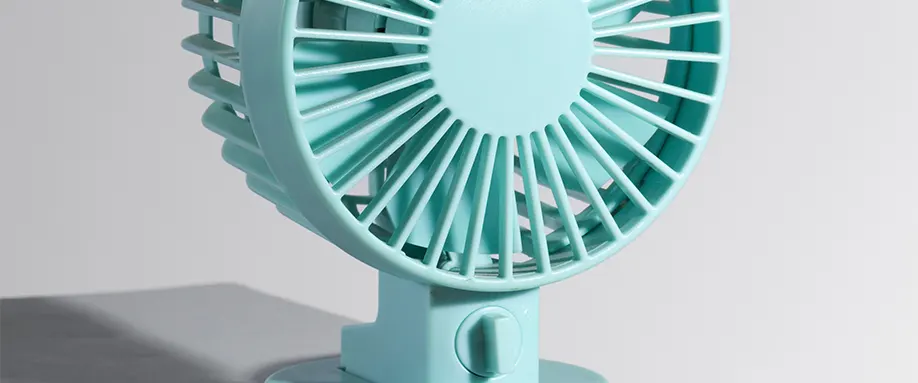
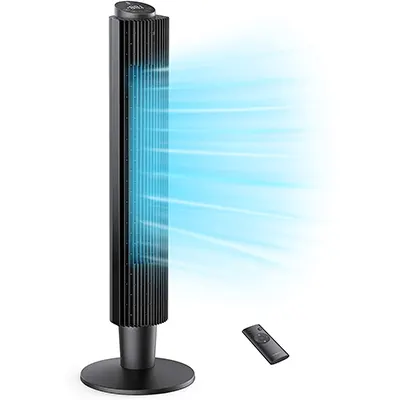
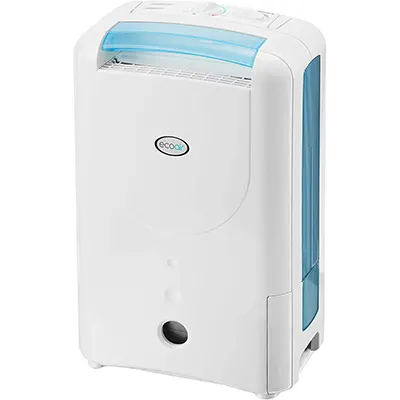
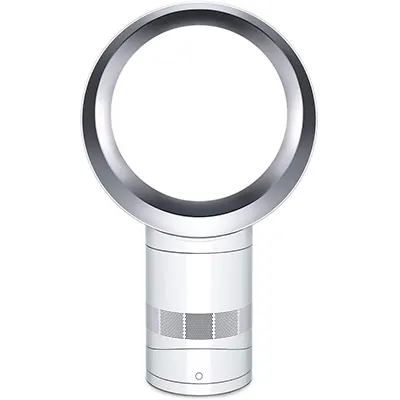
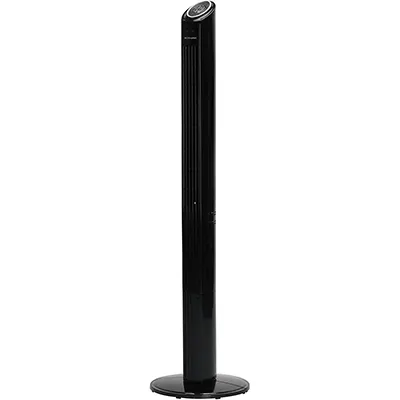
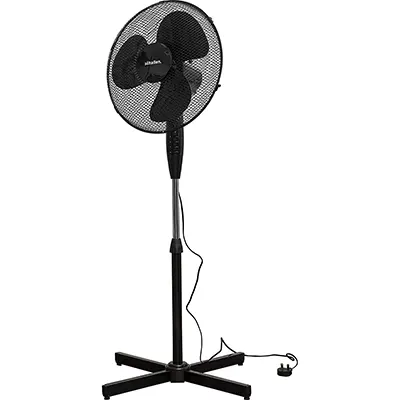
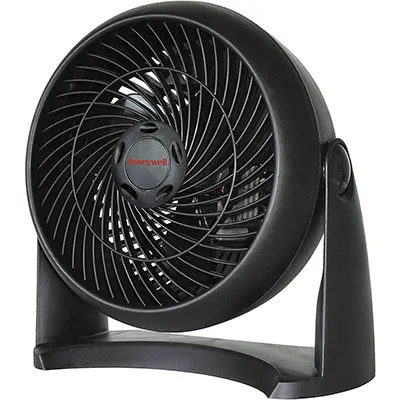
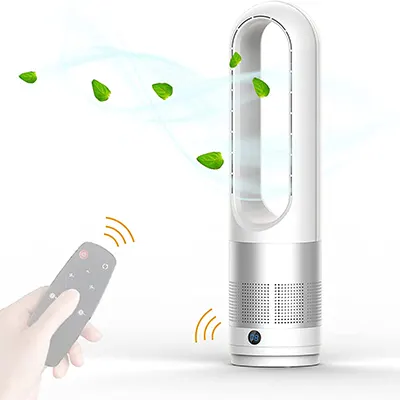
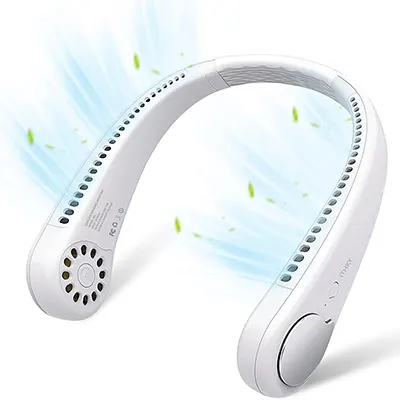
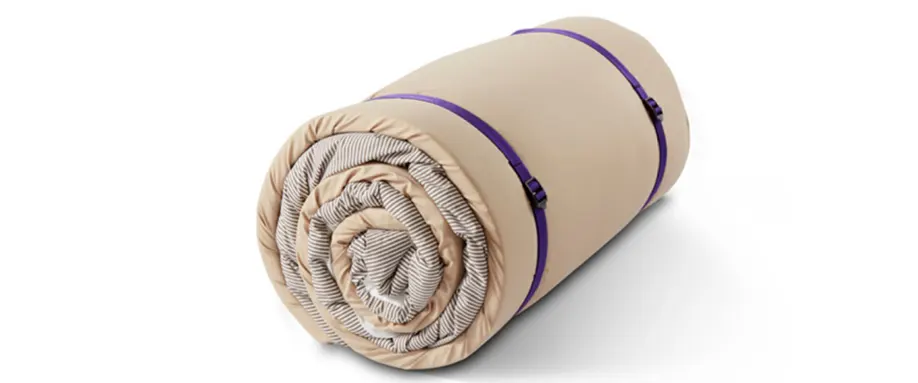
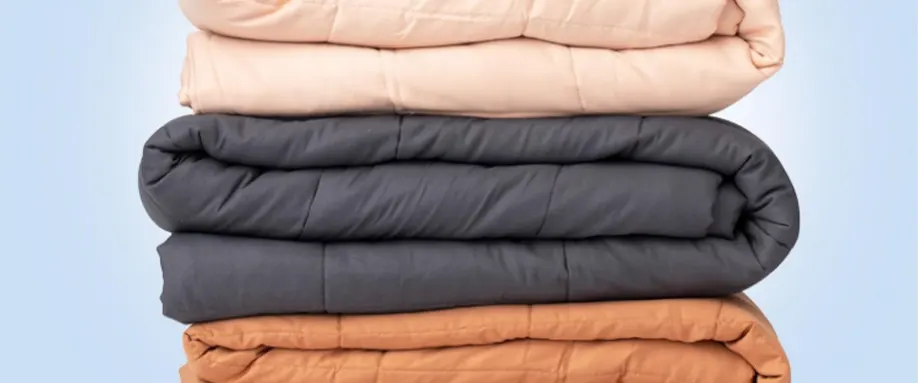













There are no comments yet
"*" indicates required fields